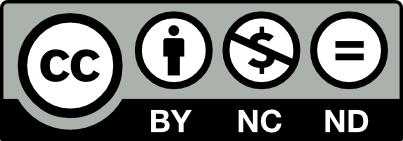This page is licensed under Creative Commons under Attribution 4.0 International. Anyone can share content from this page, with attribution and link to College MatchPoint requested.
Maximizing Your Student's Chances at UT Austin: The June Strategy Every Parent Should Know
If you've heard your high school student say, "No one's getting into UT Austin," you're not alone. The pressure and anxiety surrounding college admissions can be overwhelming for your student, especially when it comes to a highly competitive institution like UT Austin. The recent changes to UT Austin's admissions requirements may have your student feeling even more anxious about their chances of being admitted, but don't let the competition discourage them. With the right strategy and preparation, your student can stand out in the admissions process, even with acceptance rates hovering around 11% for non-auto admits.
That's why we've created a 5-step June game plan to help your student boost their chances of getting into UT Austin by focusing on finalizing their expanded resume, planning a capstone activity related to their first-choice major, brainstorming the key essays, and preparing for the October 15 early action deadline. By taking control of their admissions journey now, your student can build the confidence and application needed to showcase their unique strengths, experiences, and potential in UT Austin's holistic admissions process.
Step 1: Finalize your expanded resume.
Take the time to review and refine your expanded resume, ensuring that it showcases all of your experiences, achievements, and activities. The expanded resume is basically a list of every experience a student has had that will help the admissions office get a sense of who they are as an applicant.
Focus on highlighting your involvement in areas related to your intended major at the top, as UT Austin evaluates applications based on your "fit" for your desired field of study. Make sure to include detailed descriptions of your roles, responsibilities, and the impact you made in each activity.
UT expects that these resumes might run three to four pages—or even more—so instead of just listing titles and dates, students should describe their activities, define their roles, and elaborate on their specific experiences.

Schedule a strategy session with one of our UT experts to help your rising senior get a June jump start
Step 2: Plan a capstone summer activity related to your first-choice major.
Identify an opportunity to engage in a high-impact activity that demonstrates your passion, skill, and commitment to your intended field of study. This could be a summer research project, an internship, a community service initiative, or a creative endeavor.
Use June to research options, reach out to potential mentors or supervisors, and develop a plan for executing your capstone activity, and finalize your plan.
Not only will this experience provide valuable material for your essays and expanded resume, but it will also help you stand out as a candidate who has gone above and beyond to pursue their academic interests.


Step 3: Draft your UT major essay, working off your expanded resume to communicate fit to major
Utilize your expanded resume as a foundation for crafting your UT major essay. Take the time to review your resume and identify the experiences, skills, and achievements that best demonstrate your fit for your intended field of study. Consider how your coursework, extracurricular activities, internships, research projects, and personal pursuits have prepared you for success in your chosen major.
Once you have a list of relevant experiences, start to weave them into a cohesive narrative that showcases your passion, preparation, and potential in your intended field. Use specific examples and reflections to illustrate how your experiences have shaped your interest in your chosen major and how they have equipped you with the knowledge, skills, and perspective to thrive in the program at UT Austin.
As you craft your essay, be sure to demonstrate not only your past experiences and achievements, but also your future goals and aspirations. Discuss how the specific resources, opportunities, and faculty within your intended program at UT Austin will help you grow and develop as a student and future professional in your field. Show that you have done your research and have a clear vision for how you plan to contribute to and make the most of your time in the program.
What Is "Fit-To-Major" And Why Is It So Important At UT
Fit-to-major is a critical concept in the UT Austin admissions process, referring to how well a student's academic background, extracurricular experiences, and personal interests align with their chosen field of study. UT Austin evaluates each applicant's fit to their first-choice major as a key factor in determining their admissions decision, looking beyond just grades and test scores to assess a student's potential to thrive and contribute to their intended program. This holistic approach allows the university to build diverse and talented cohorts of students within each major who have the passion, preparation, and perspective to succeed academically and professionally in their chosen fields.
For applicants, demonstrating fit-to-major through their essays, expanded resume, and other application materials is essential to standing out in the highly competitive admissions process and showcasing their unique value and potential as a future Longhorn. Ultimately, fit-to-major is so important at UT Austin because it helps the university identify and admit students who are not only academically qualified, but also deeply engaged and committed to their chosen areas of study, setting them up for success and fulfillment throughout their college careers and beyond.

Step 4: Brainstorm and draft your UT Austin long essay.
Begin the process of crafting your personal statement for the UT Austin application. Use June to reflect deeply on your experiences, values, and goals, and brainstorm potential topics that showcase your unique perspective and personal growth.
Consider the moments, relationships, and challenges that have shaped who you are today and how you want to contribute to the world in the future. Once you have a clear direction and a few potential topics in mind, start drafting your essay, focusing on telling a compelling story that highlights your personality, passions, and fit for UT Austin. Use details, anecdotes, and reflections to bring your story to life and demonstrate your authenticity and self-awareness. As you write, keep in mind that the essay is an opportunity to showcase not just what you've done, but who you are and what you value.
Don't be afraid to go through multiple drafts and iterations to ensure that your final product is a true reflection of your best self and makes a compelling case for your admission to UT Austin.

Step 5: Plan ahead for the October 15 early action deadline
By submitting your application before the October 15 early action deadline, you can receive your admissions decision from UT Austin by January 15, giving you ample time to plan your next steps, compare financial aid packages, and make an informed decision about your college future.
Use June to create a detailed timeline for completing your application components, including standardized tests, essays, and recommendation letters. Break down each task into smaller, manageable steps and set specific goals and deadlines for yourself to ensure that you stay on track and make steady progress throughout the month. Consider creating a spreadsheet or using a project management tool to help you stay organized and accountable. As you plan your timeline, be sure to prioritize the most critical and time-consuming components of your application, such as studying for and taking standardized tests, drafting and revising your essays, and reaching out to potential recommenders.
Aim to submit your application at least a week before the October 15 deadline to account for any potential technical difficulties, last-minute issues, or unexpected delays. This will give you a buffer to address any problems that may arise and ensure that your application is received by UT Austin on time. Remember, the early action deadline is your chance to make a strong first impression on the admissions committee, so use June wisely to put your best foot forward and maximize your chances of success.


